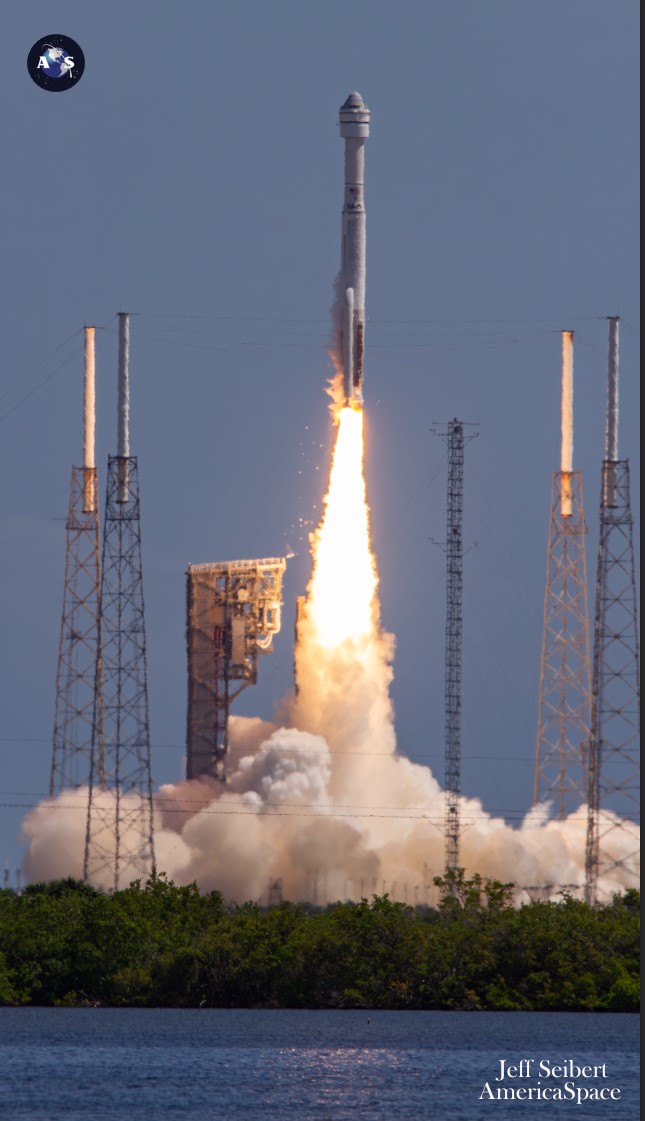
For the first time in six decades, a member of the long-serving Atlas family of launch vehicles has returned to human spaceflight service, delivering Boeing’s CST-100 Starliner spacecraft and Crew Flight Test (CFT) Commander Barry “Butch” Wilmore and Pilot Suni Williams safely into orbit from storied Space Launch Complex (SLC)-41 at Florida’s Cape Canaveral Space Force Station. The workhorse Atlas V booster—flying the fleet’s 100th mission since August 2002—took flight under 1.6 million pounds (725,500 kilograms) of thrust at precisely 10:52:15 a.m. EDT Wednesday, pushing Wilmore and Williams on the first leg of their daylong trek to the International Space Station (ISS).
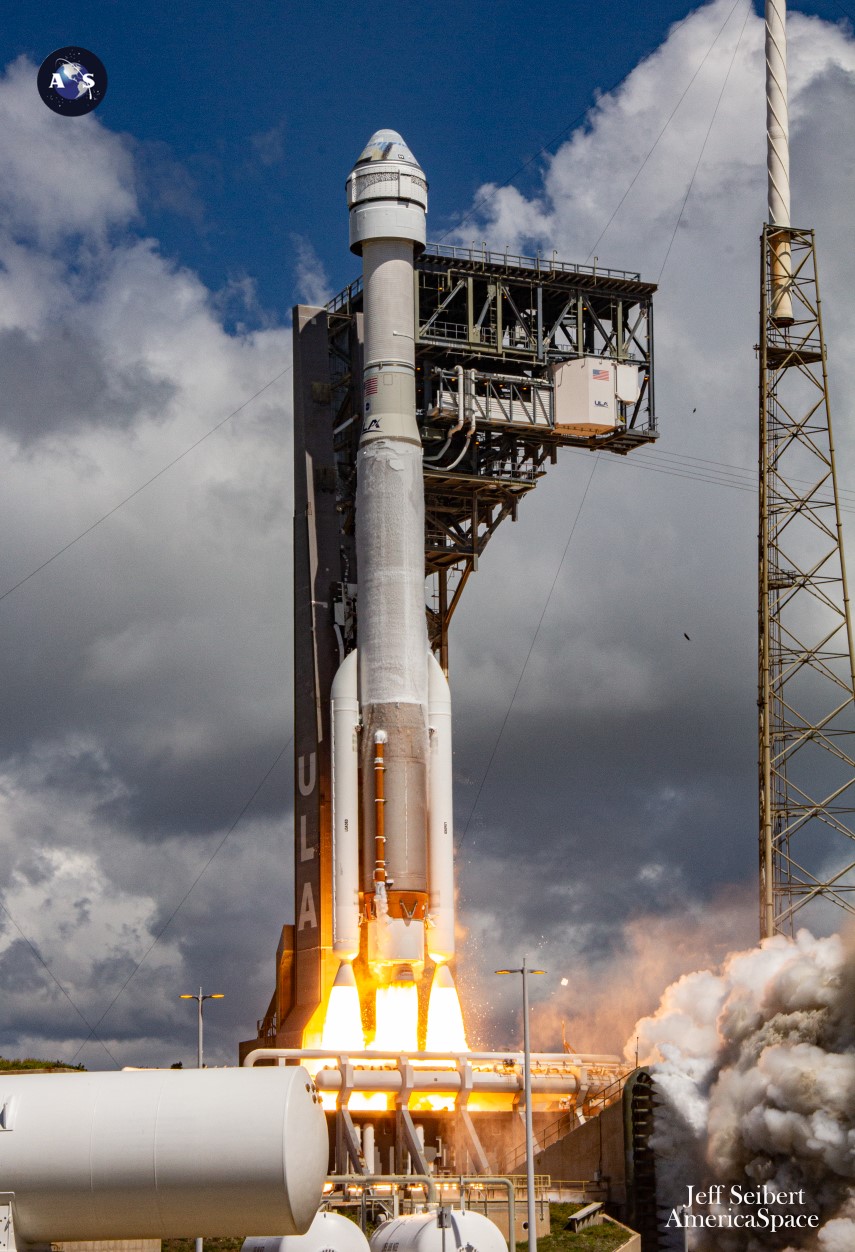

As previously detailed by AmericaSpace, CFT is the second step in the process of certifying Starliner as one of two Commercial Crew vehicles (alongside SpaceX) to deliver astronauts to and from the space station. Two Orbital Flight Tests (OFTs) in December 2019 and May 2022 occurred in an uncrewed capacity, but CFT marks the first occasion that a human crew is aboard to complete a full end-to-end demonstration of the spacecraft and its capabilities from launch, through orbital operations, re-entry and landing.
Current plans call for Wilmore and Williams to dock autonomously at the forward-facing port of the Harmony node tomorrow, after which they will be welcomed aboard the space station by Expedition 71 Commander Oleg Kononenko, his Russian crewmates Nikolai Chub and Aleksandr Grebenkin and U.S. astronauts Matt Dominick, Mike Barratt, Jeanette Epps and Tracy Dyson. The newcomers will spend at least eight “docked” days on the ISS, performing a series of critical flight test objectives, before undocking and returning to a parachute-and-airbag-aided landing in the southwestern United States.


Wednesday’s launch proved third time lucky for Wilmore and Williams, who have been in dedicated training for CFT since June 2022. Their first launch attempt on the evening of 6 May was scrubbed less than two hours before T-0, due to a faulty oxygen relief valve on the Atlas V’s second stage. And a second try last Saturday also came disappointingly to nought due to a Ground Support Equipment (GSE) issue that cropped up less than four minutes prior to the scheduled liftoff.
Teams elected to forego a backup attempt on Sunday and aimed instead for a midweek pair of launch opportunities—both instantaneous—at 10:52 a.m. EDT Wednesday and 10:29 a.m. EDT Thursday. Weather conditions earlier today hovered around 90-percent-favorable, with scattered clouds, good visibility, light southeasterly winds and temperatures approaching 27 degrees Celsius (82 degrees Fahrenheit).
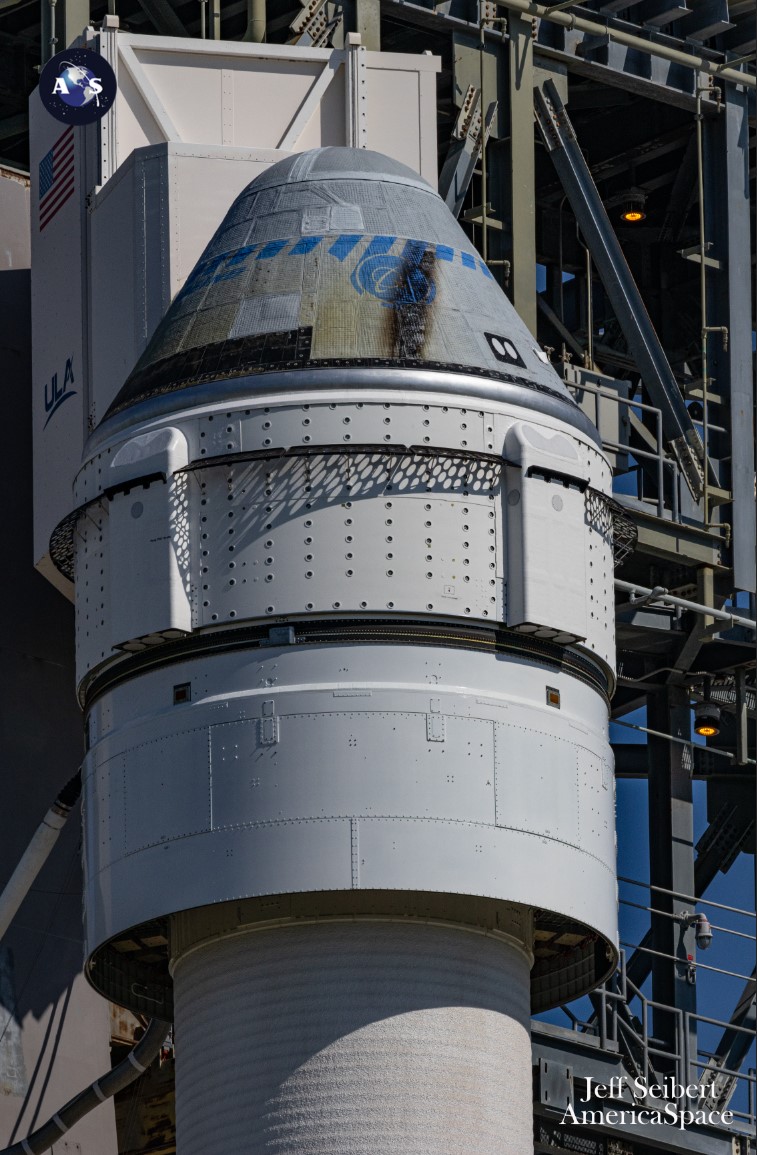

The action got underway at 11:32 p.m. EDT Tuesday, about 11 hours prior to T-0, when the countdown clock started ticking at T-6 hours and 20 minutes. A team of engineers under the leadership of United Launch Alliance (ULA) Preps Launch Conductor Dillon Rice began powering-up the 172-foot-tall (52.4-meter) Atlas V.
“Team is on console,” tweeted ULA CEO Tory Bruno. “Board is green.”


This particular Atlas V incarnation—nicknamed “The Bodyguard” in honor of its crew-carrying credentials—is formally designated “N22” and comprises a Common Core Booster (CCB), a pair of AJ-60 solid-fueled boosters provided by Aerojet Rocketdyne, a Dual-Engine Centaur (DEC) upper stage, the Launch Vehicle Adapter (LVA) and Starliner.
The N22 (the nomenclature denotes “No” payload fairing, two solid-fueled boosters and a two-engine Centaur) has been used twice before, on Starliner’s OFT missions in December 2019 and May 2022. Notably, the Mighty Atlas previously flew humans four times—lofting “Original Seven” Project Mercury astronauts John Glenn, Scott Carpenter, Wally Schirra and Gordon Cooper atop Atlas-D boosters for their history-making missions between February 1962 and May 1963—and CFT marks the first occasion a member of this decades-old family of rockets has carried people in over 61 years.
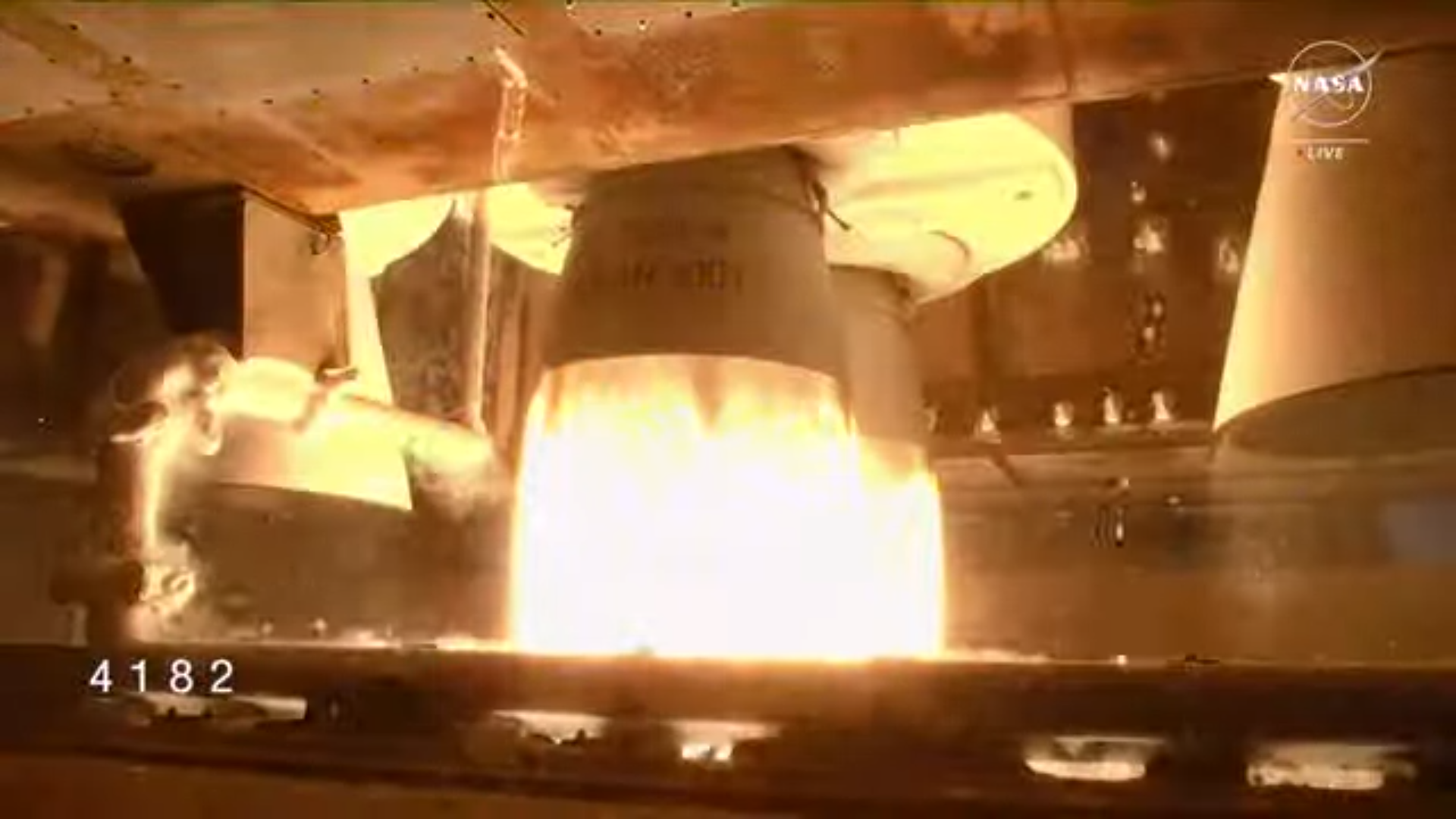

Today’s lengthy countdown included a pair of pre-planned, built-in holds. The first, lasting 60 minutes, began at 3:52 a.m. EDT, at T-2 hours, and enabled a shift-change to take place in the Launch Control Center (LCC) as Mr. Rice’s Preps Launch Team handed over their console responsibilities to the Tanking and Launch Team, overseen by ULA Chief Launch Conductor Doug Lebo.
With 25,000 gallons (94,000 liters) of “storable” RP-1 kerosene having been loaded into the Atlas V CCB tanks prior to the 6 May launch attempt, efforts moved into high gear to fuel the booster and Centaur with cryogenic liquid oxygen and hydrogen. All told, the DEC was fueled with 4,150 gallons (18,870 liters) of super-cooled liquid oxygen and 12,300 gallons (46,560 liters) of liquid hydrogen and the CCB was loaded with 48,800 gallons (184,730 liters) of liquid oxygen.


Following the conclusion of fueling and topping of the propellant tanks, clocks halted again at 6:48 a.m. EDT, at T-4 minutes, for a planned four hours. With the Atlas V now in a “quiescent” state, the eight-person ULA/Boeing “Blue Team” accessed the pad shortly after 7 a.m. EDT to verify no toxic vapors and set to work opening Starliner’s hatch and readying the interior for Wilmore and Williams.
Elsewhere, the astronauts were handed over to the Boeing team in the Neil Armstrong Operations & Checkout (O&C) Building where they received a weather briefing and were attired in their customized “Boeing Blue” launch and entry suits. Shortly after 7:30 a.m. EDT, they walked out to the Crew Transfer Vehicle (CTV) to be greeted by a clutch of family, friends and well-wishers, before heading to SLC-41.
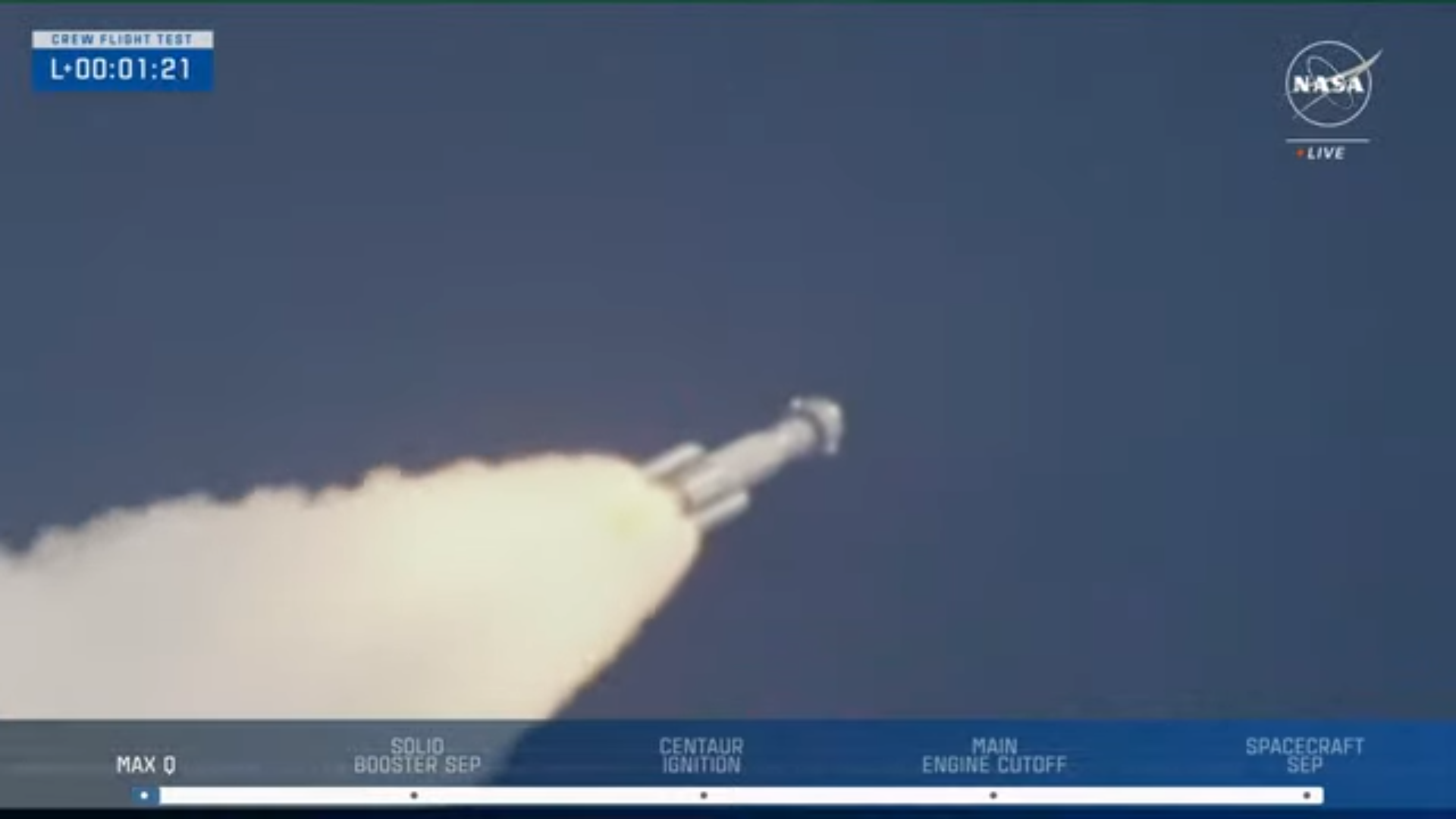

By 8 a.m. EDT, atop the launch pad’s Crew Access Tower (CAT) at Level 12, the process of loading the dynamic duo—first Wilmore, then Williams—aboard Starliner got underway and the astronauts pressed directly into communications and pressure checks. It was at around this point on 6 May that their first launch attempt stopped. But this time, the countdown continued smoothly.
Starliner’s hatch was closed and sealed at 9:15 a.m. EDT, leaving Wilmore and Williams alone with their thoughts and the 800 pounds (360 kilograms) of cargo heading up to the ISS. Included in that total are tools, life-support equipment and a replacement pump for the station’s Urine Processing Assembly (UPA).


All told, there are 25 bags heading uphill for Boeing and ten for NASA. It is expected that the crew will return to Earth with 750 pounds (340 kilograms) of equipment, including an empty Nitrogen Oxygen Recharge System (NORS) tank.
Shortly after 10 a.m. EDT, the Blue Team completed their work at the pad, retracting the access board into Starliner and deflating the environmental seal around the spacecraft’s hatch, before departing the pad to a fallback area.
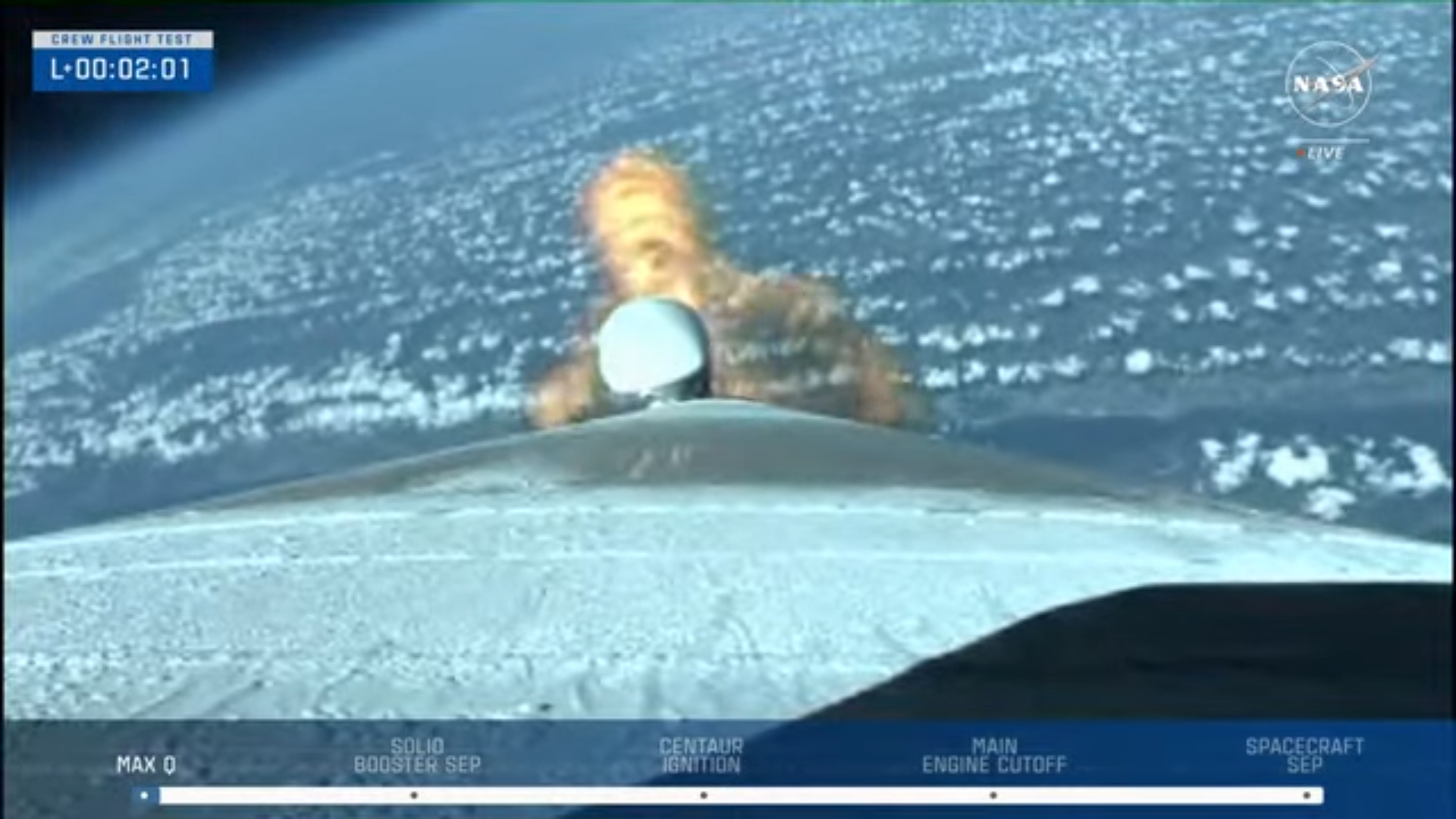

Meanwhile, Mother Nature also smiled favorably on the proceedings. “Upper-level winds have been verified acceptable for structural loads and vehicle controls,” noted ULA. “Winds are green for today’s launch opportunity.”
The CAA retracted at T-10 minutes, rotating 120 degrees backward to stow and latch itself against the CAT. Shortly thereafter, Starliner transitioned to internal power and Wilmore was told to configure ordnance for launch.
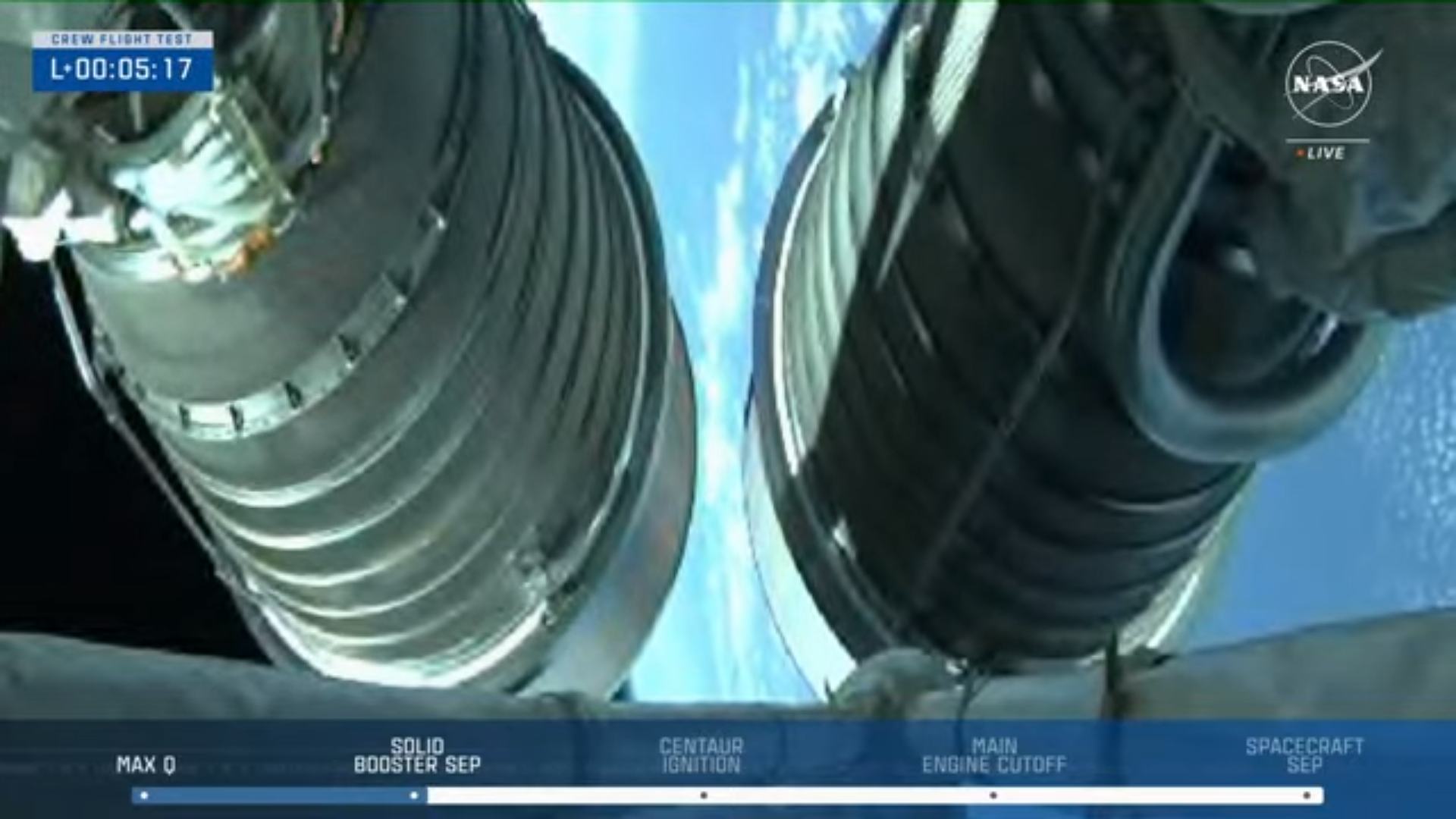

At T-7 minutes, Mr. Lebo polled his launch control team for their final “Go/No-Go” status and was met with a string of “Go” calls across the board. One of the final stations to be called was the crew, with Wilmore replying crisply: “Starliner, Go!”
In a handful of brief remarks, the commander paid tribute to the sheer number of U.S. flags he and Williams had seen fluttering in the breeze during their journey to the pad. “When the going gets tough—and it often does—the tough get going,” said Wilmore. “Let’s get going. Let’s put some fire in this rocket!”
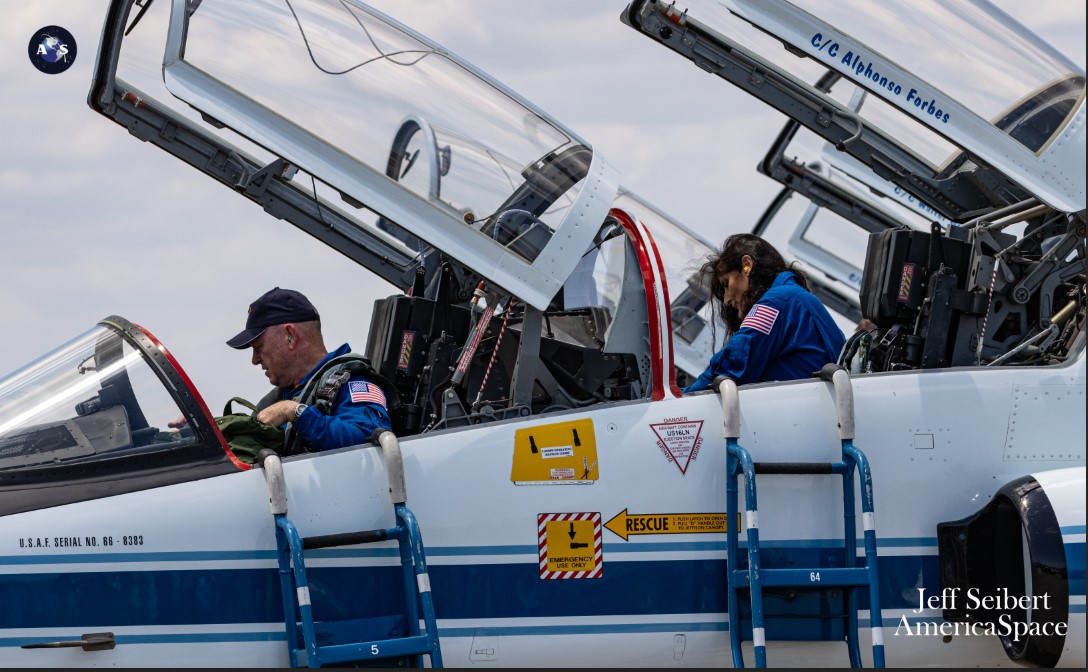

The Terminal Count resumed on time at T-4 minutes and hearts surely leapt into throats as the clock reached T-3 minutes and 50 seconds—the point at which last Saturday’s launch attempt was halted—but continued counting with a flawless green board. Communications flowed laconically across the loop: the Atlas V’s propellant tanks pressurized for flight, the Flight Termination System (FTS) was put onto internal power and armed and the Range Operations Commander (ROC) confirmed “Range Green” at T-1 minute.
“Godspeed, Butch and Suni,” came the call at T-30 seconds.
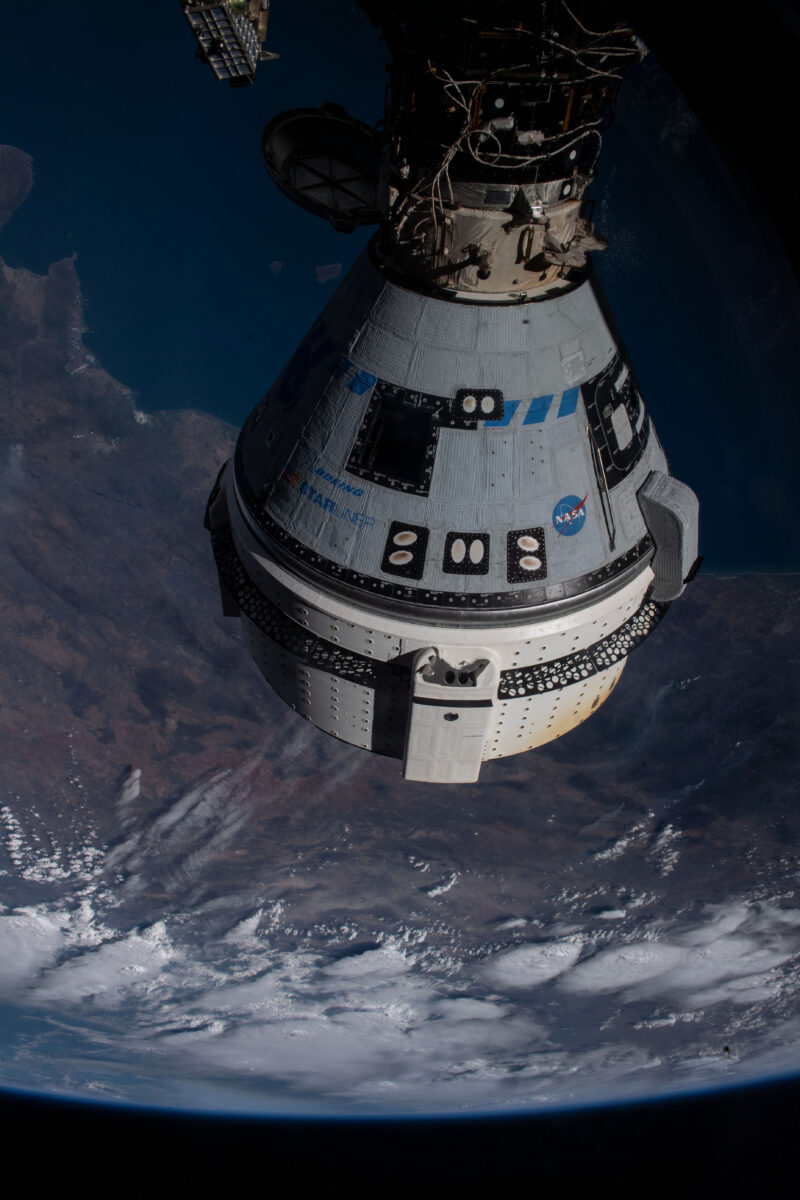

Liftoff at 10:52:15 a.m. EDT was as picture-perfect as we have become accustomed with Atlas V launches, the veteran beast rising into crystalline Florida skies atop a column of golden fire. Wilmore performed his first post-liftoff radio call—“Roll Program”—as the stack cleared the tower and roared into the morning sky.
The behemoth passed through peak aerodynamic turbulence (colloquially termed “Max Q”) and exceeded the speed of sound at just past a minute into the flight and the twin AJ-60 boosters were jettisoned at T+140 seconds. Riding onward under the RD-180, Wilmore and Williams experienced Booster Engine Cutoff (BECO) at 4.5 minutes into the flight.
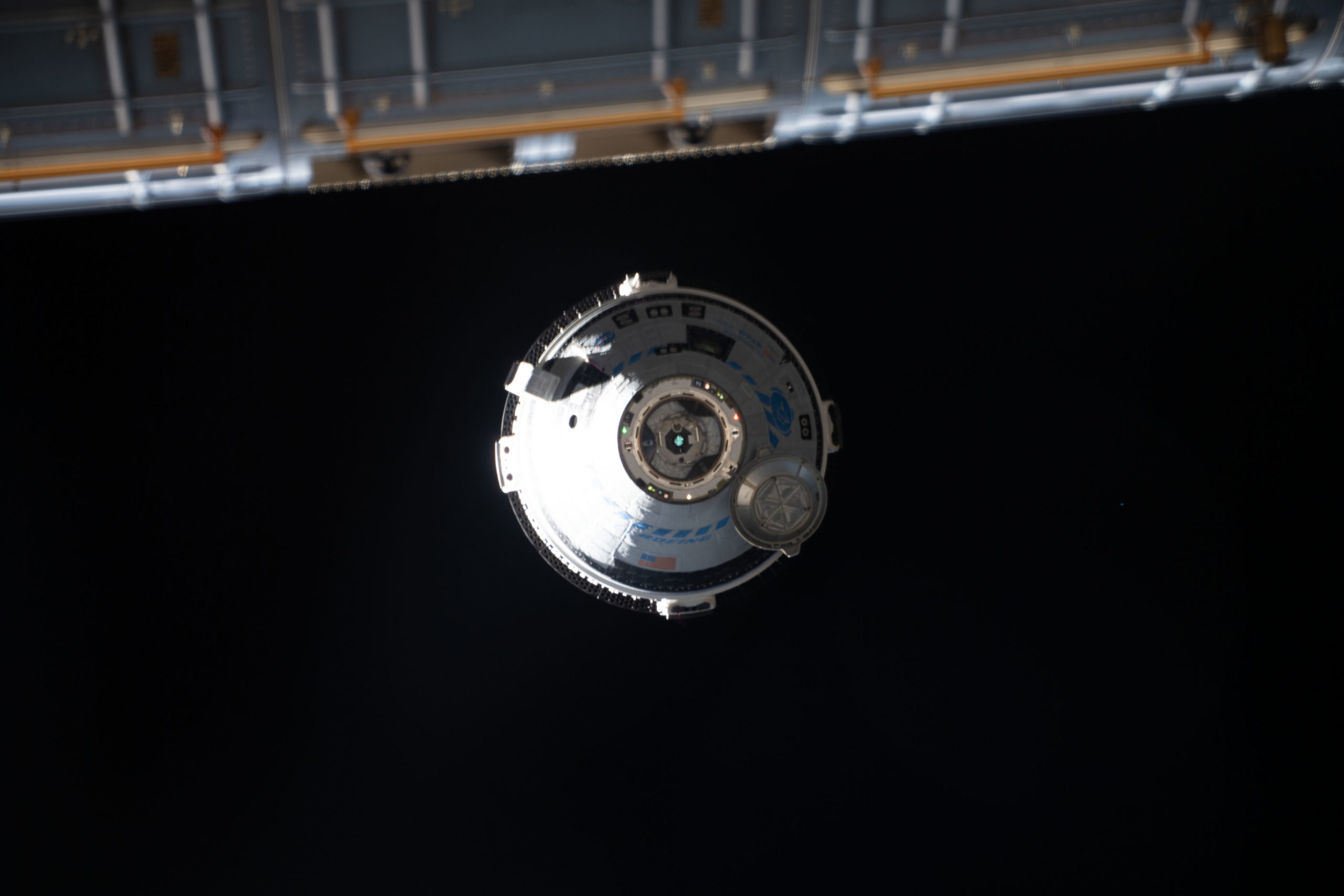

After BECO, the Centaur ignited its dual RL-10A engines for a lengthy “burn” of seven minutes and 15 seconds to push Starliner into orbit. Fourteen minutes and 55 seconds into the mission, the spacecraft—which Williams named “Calypso”, honoring the former British naval minesweeper made famous by French oceanographer Jacques Cousteau—separated from the Centaur and enter a preliminary orbit inclined 51.62 degrees to the equator.
The astronauts will follow a 25-hour, 16-orbit rendezvous to reach the ISS, with docking anticipated at the forward port of the station’s Harmony node about 12:15 p.m. EDT tomorrow. During their transit, Wilmore and Williams will be tasked with multiple test objectives, including manually repositioning their spacecraft, manually reacquiring Tracking and Data Relay Satellite System (TDRSS) assets, manually operating Starliner’s thrusters and commanding their vehicle in the close vicinity of the station itself.
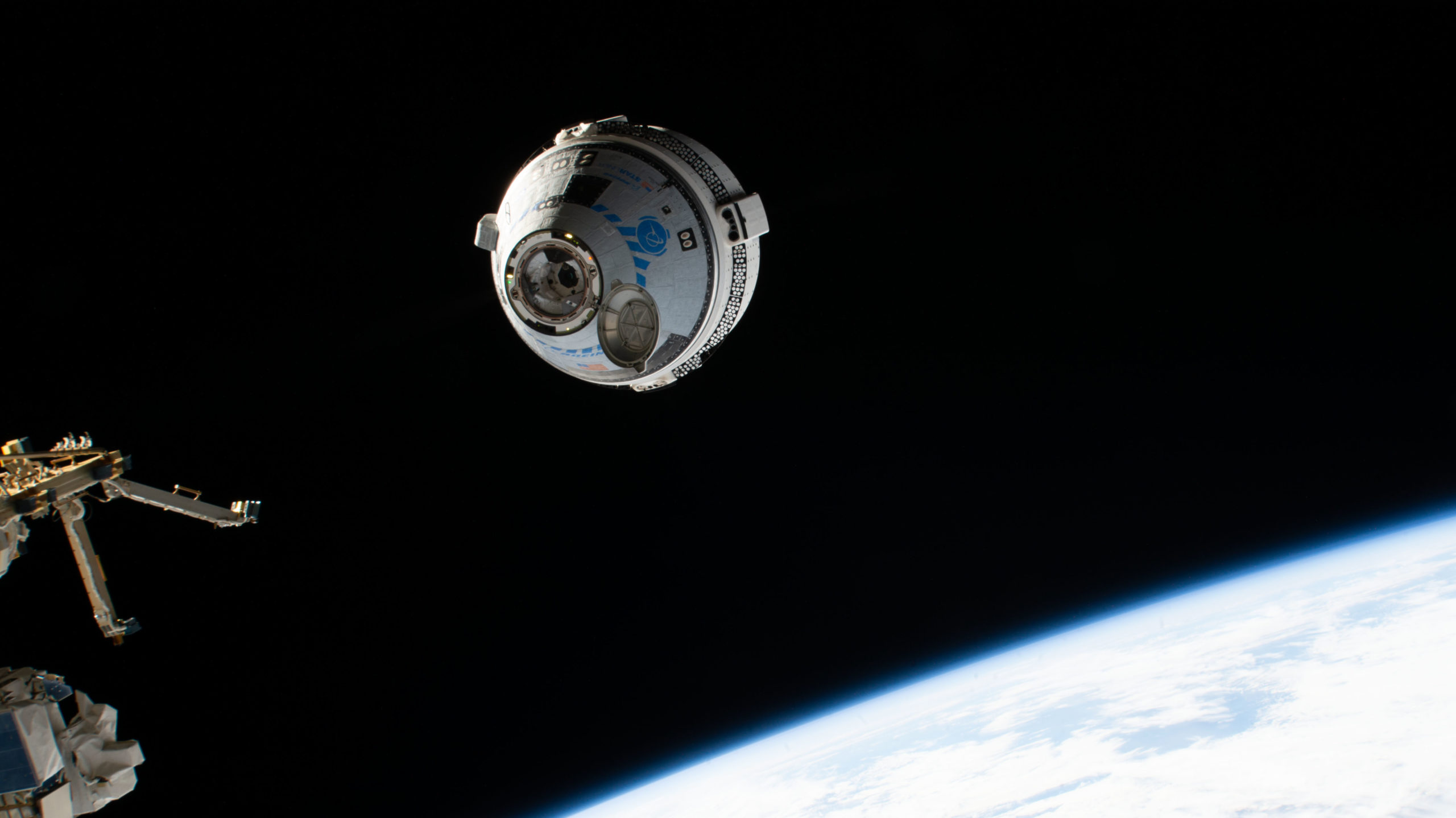

After docking and following pressurization and leak checks, hatches will open and the newcomers will be welcomed by Expedition 71 Commander Oleg Kononenko, his Russian crewmates Nikolai Chub and Aleksandr Grebenkin and NASA astronauts Matt Dominick, Mike Barratt, Jeanette Epps and Tracy Dyson. An initial safety briefing will kick off an ambitious schedule of flight test activities expected to be completed in no fewer than eight docked days.
Several notable tasks will occur during that tightly timelined period. Wilmore and Williams will perform a “Safe Haven” period of isolation inside Starliner to demonstrate procedures for an emergency departure, including the powering-up and rapid checkout of spacecraft systems if an imminent undocking becomes necessary.
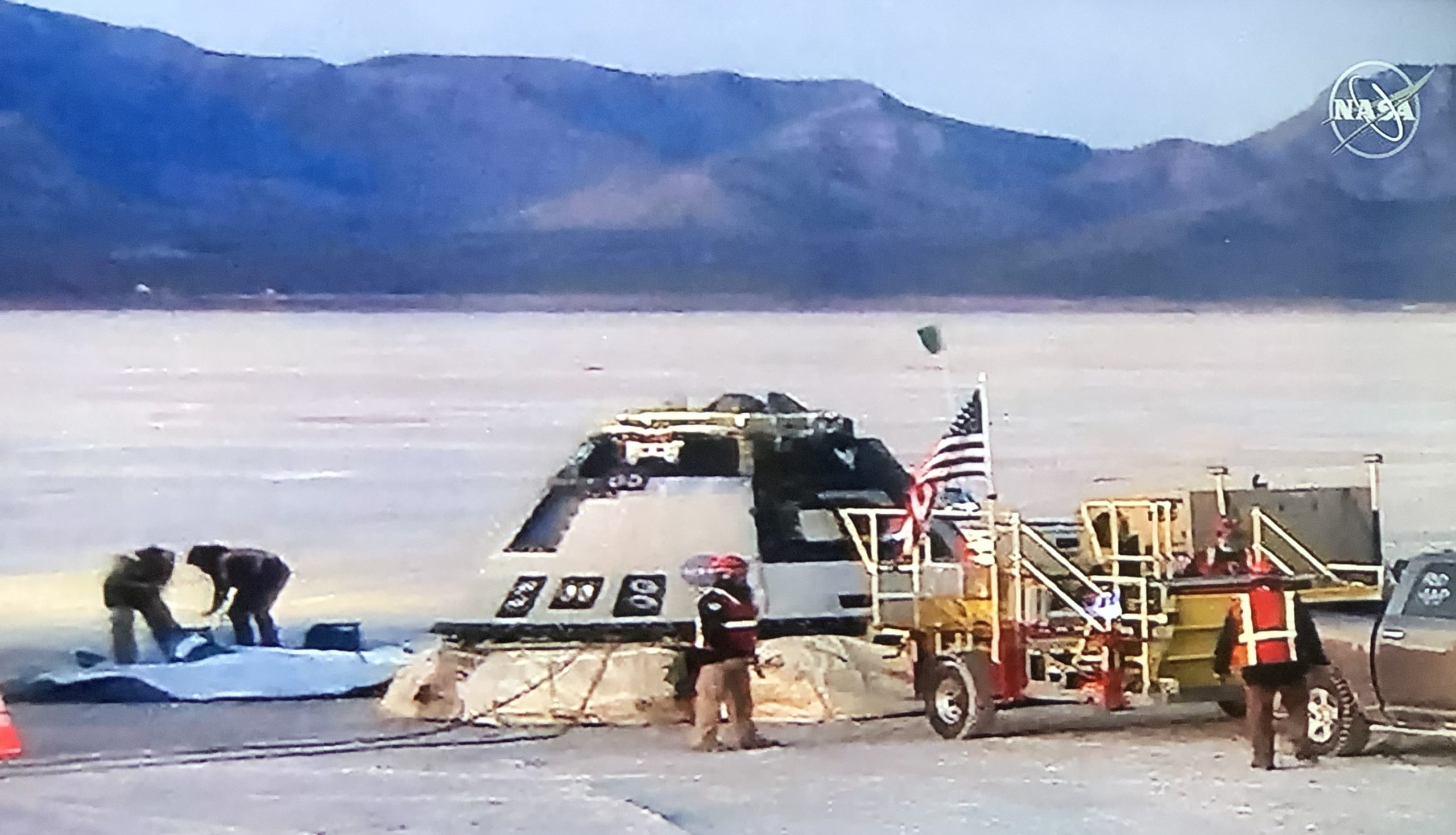

They will also complete pilot-proficiency training in support of future Starliner crews, which are expected to expand to four members on operational, long-duration missions. Since there are only two crew members aboard CFT, they expect to pull over two members of the Expedition 71 team to assist with their evaluations of four-crew operations. “If they’re nice,” Williams joked, “we’ll let them in”, adding that all four U.S. members of Expedition 71 are chomping at the bit to get an insider’s view of Starliner.
Undocking is set to occur after a minimum of eight “docked” days, about 6.5 hours prior to landing, a little sooner than it would happen on operational missions in order that Wilmore and Williams can perform additional tests. CFT will perform a minute-long deorbit “burn” over the Pacific Ocean, with four landing zones—two areas at White Sands, N.M., plus two others at Willcox Playa, Ariz., and Dugway Proving Grounds, Utah—available to the crew.
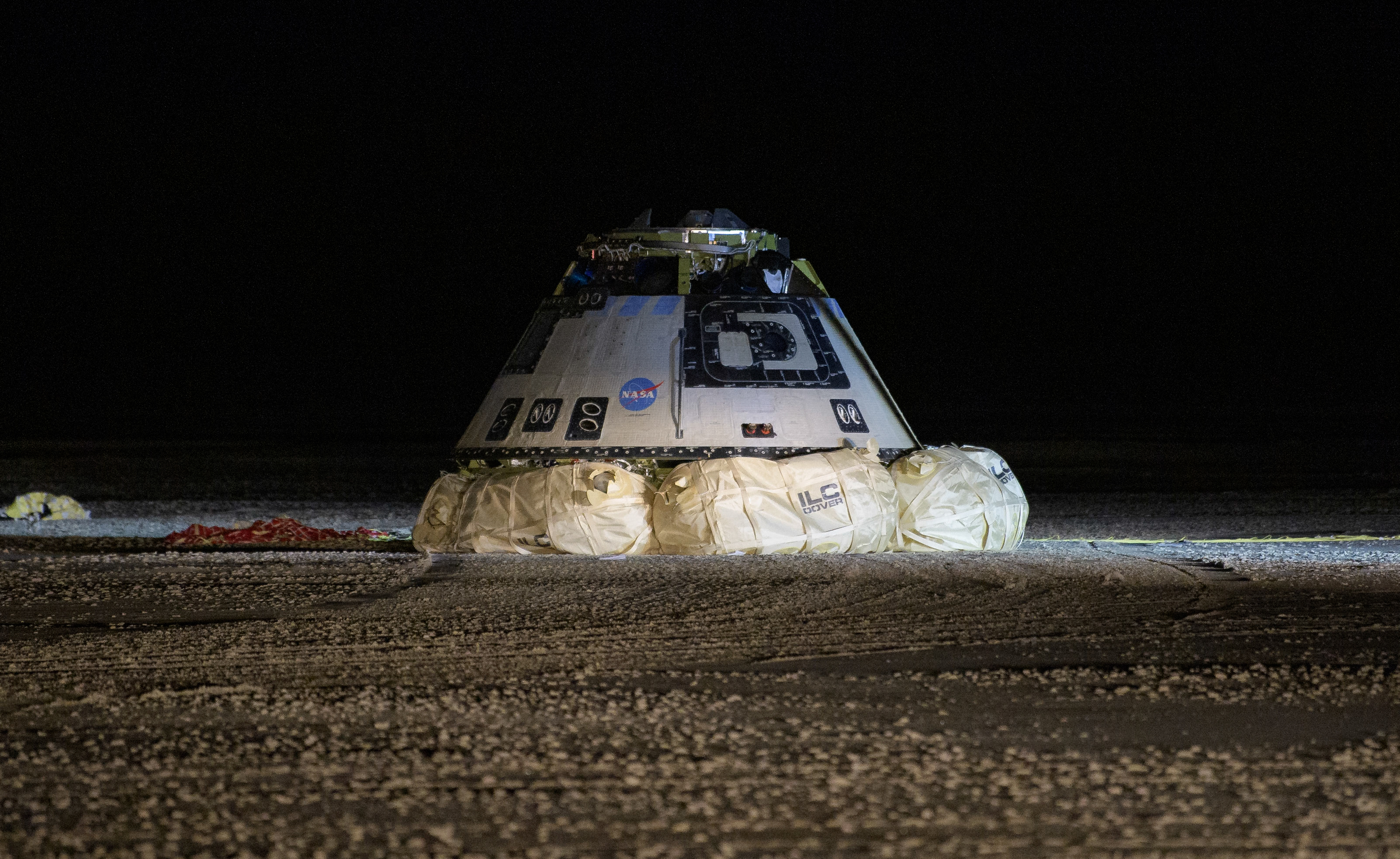

Starliner’s landing sequence will commence at an altitude of 30,000 feet (9,000 meters), with a set of drogue parachutes and later the main canopies “reefed” at 8,000 feet (2,400 meters). Touching down under parachutes and airbags, Wilmore and Williams will be extracted from the spacecraft, helicoptered to a landing field and then flown back to NASA’s Johnson Space Center (JSC) in Houston, Texas.
FOLLOW AmericaSpace on Facebook and X!


